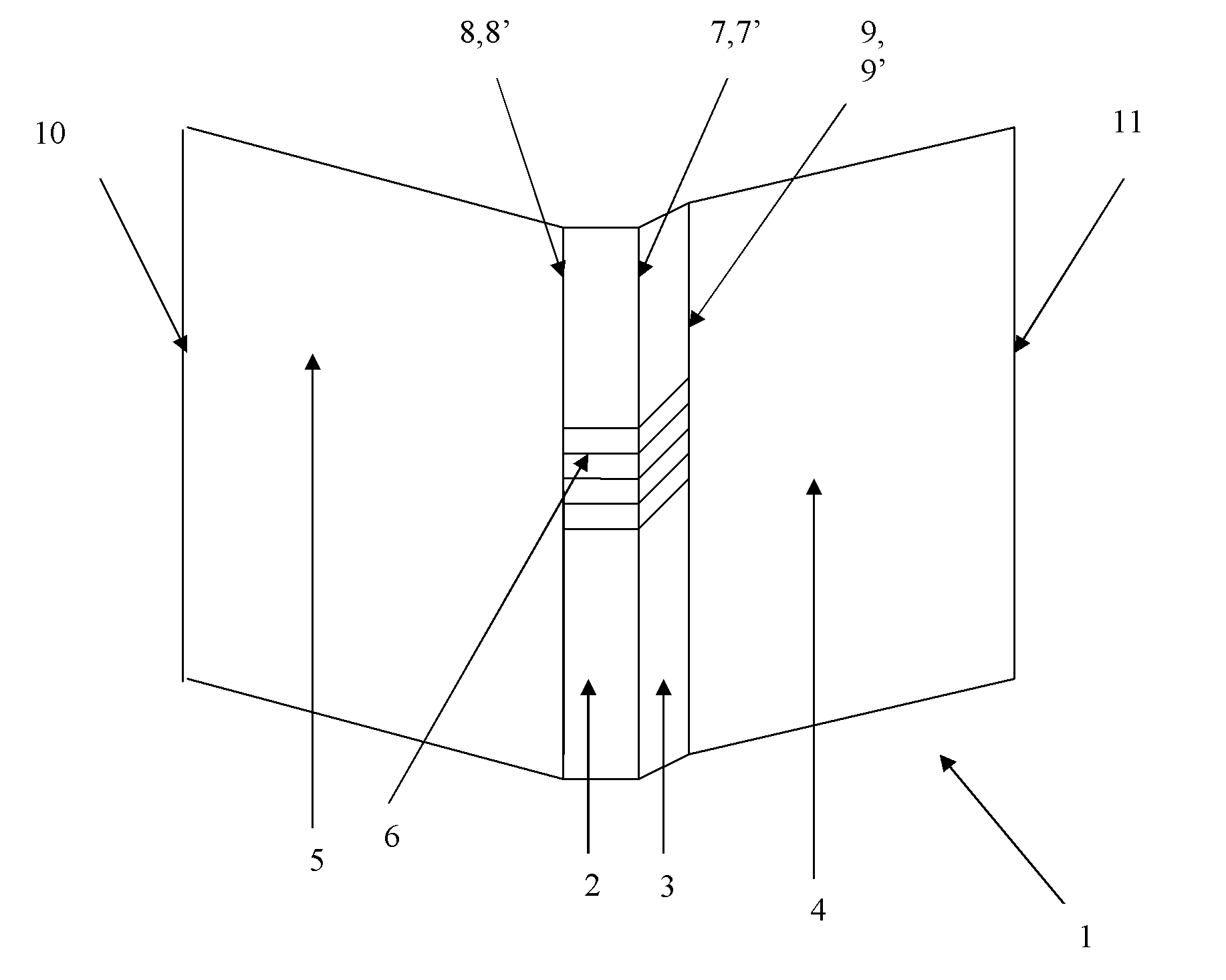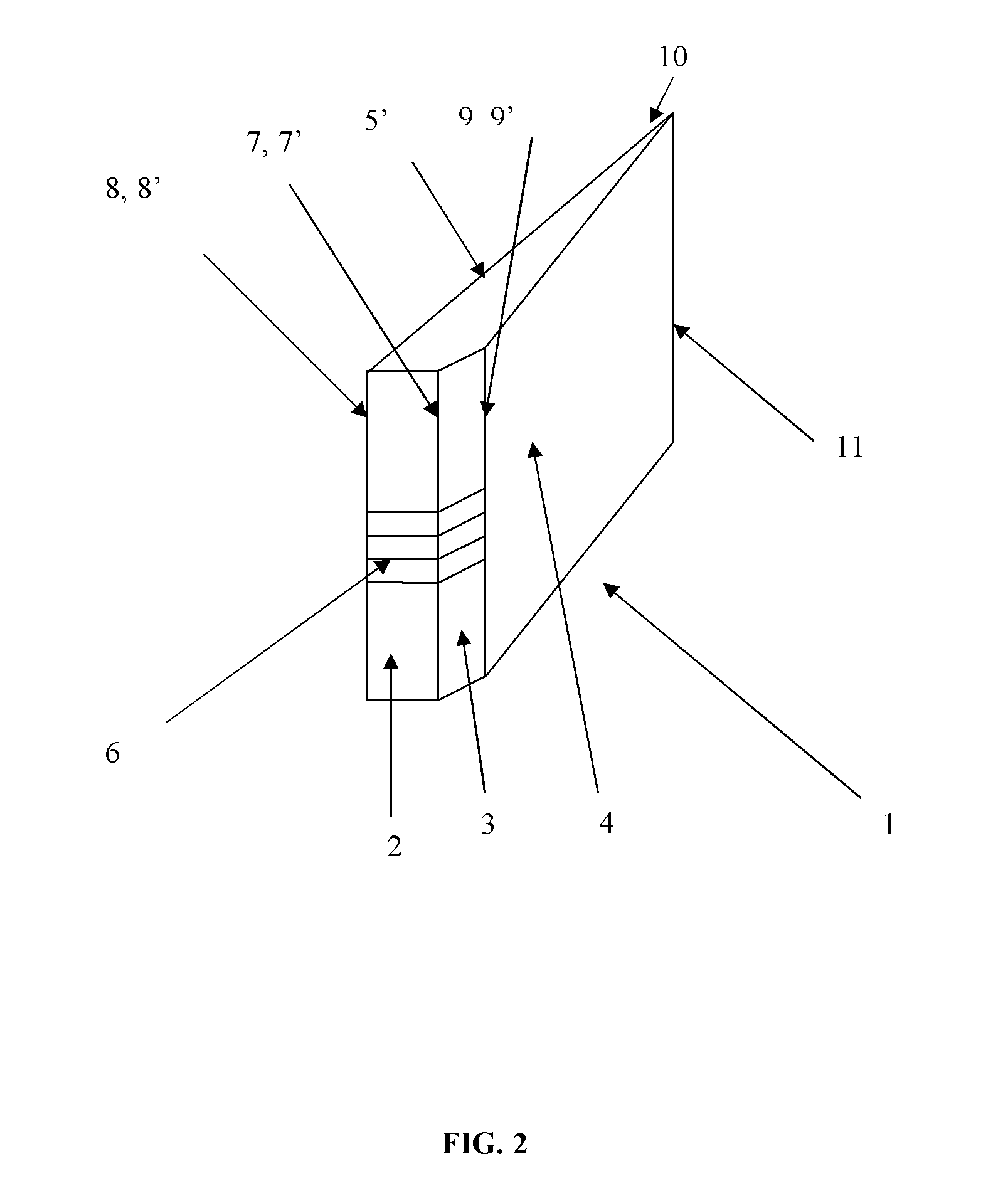Binder apparatus
a technology of binders and apparatuses, which is applied in the field of binders, can solve the problems of occupying a considerable amount of shelf space, binders that hang over the edge of storage shelves, and suffer from various disadvantages, and achieves the effects of convenient use, convenient change by users, and convenient handling
- Summary
- Abstract
- Description
- Claims
- Application Information
AI Technical Summary
Benefits of technology
Problems solved by technology
Method used
Image
Examples
Embodiment Construction
[0030]The particular values and configurations discussed in these non-limiting examples can be varied and are cited merely to illustrate at least one embodiment and are not intended to limit the scope thereof.
[0031]FIG. 1 illustrates a double hinged binder 1 including a spine 2, a front flange 3, a front cover 4, a rear cover 5, a label holder means 6 provided on the spine and a plurality of rings not shown disposed on the internal surface of the rear cover, in accordance with a preferred embodiment. Note that the label holder means can be configured to extend along the length of the spine and completely over area 3 (flange) and area 4 (front cover), depending upon the binder design configuration. The label holder 6 can be configured as a wrap-around label holder and may be implemented in a full-overlay fashion or partial small overlay configuration, depending upon design configurations. The label holder 6 illustrated in FIG. 1 is illustrated as a partial small overlay configuration...
PUM
 Login to View More
Login to View More Abstract
Description
Claims
Application Information
 Login to View More
Login to View More - R&D
- Intellectual Property
- Life Sciences
- Materials
- Tech Scout
- Unparalleled Data Quality
- Higher Quality Content
- 60% Fewer Hallucinations
Browse by: Latest US Patents, China's latest patents, Technical Efficacy Thesaurus, Application Domain, Technology Topic, Popular Technical Reports.
© 2025 PatSnap. All rights reserved.Legal|Privacy policy|Modern Slavery Act Transparency Statement|Sitemap|About US| Contact US: help@patsnap.com



